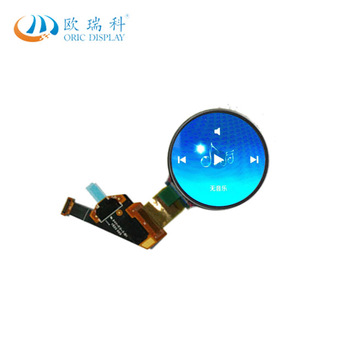Enterprise Name: Shenzhen Oric Electronics Co., Ltd.
Tel: +86-755-85276665
Mobile phone: +86-18924648655
Mailbox: Lisa@oriclcd.com
Fax: 0755-89480065
Office Address: 4th floor, Building B, No.48th,
Huanguan Middle Road, Guanhu street,
Longhua District, Shenzhen, China 518110
The Difference between OLED Screen and LCD Screen--TFT LCD Screen Manufacturer

LCD's luminous principle mainly depends on the backlight layer, which is usually composed of a large number of LED backlights. It has only one function, that is, to display white light, but white light can not form an image. So a layer of colored film is added to the white backlight layer. White backlight can show color after penetrating the colored film, but the ratio of red to green and blue needs to be adjusted. We can not let light directly penetrate red, green and blue, but through the liquid crystal layer, we can control the arrangement of liquid crystal molecules by changing the voltage between the two poles. In this way, we can control the amount of white light and adjust the ratio of red, green and blue.
OLED does not need a backlight layer like the LCD screen, nor does it need a liquid crystal layer to control the amount of light. OLED can self-luminous, so OLED is like a screen with numerous small combinations of color bulbs.
Defects of LCD Screen
At present, LCD has a fatal problem, that is, the LCD layer can not be completely closed, so if LCD shows black, some light will pass through the color layer, and the black of LCD is actually a mixture of white and black gray, from the other side of the film, it is actually the gray of a sharp decline in brightness, rather than pure black.
Unlike OLED, when OLED displays black, it can directly close the pixels in the black area to achieve almost pure black effect.
In addition, because of the existence of backlight layer, LCD display still has the phenomenon of light leakage, and LCD can not completely avoid the phenomenon of light leakage.
Advantages of OLED Screen
Thickness: LCD is much thicker than OLED because of its backlight layer and liquid crystal layer, so OLED screen is very easy to make the cell phone or display thin, which is a big improvement for mobile phones. Thinner screen allows you to plug in more components to enhance the experience of other parts.
Flexibility: Because of the existence of liquid crystal layer and backlight layer, LCD screen can not bend substantially, while OLED can fold almost as freely as origami. Samsung's curved surface screen is supported by OLED technology. It should be noted that here is a large bending, desktop surface screen or LCD, you can find that the degree of bending is not large, OLED can be folded in the same way as paper.
Color: Contrast refers to the ratio of white to black. The higher the contrast, the thicker the color of the picture. LCD has a backlight layer, black is not pure black, so it is difficult to improve the contrast. OLED black does not emit light, so it can close some pixels in the black area directly, so it is basically infinite close to black.
Individual lighting: LCD opens is the whole backlight layer is open, so LCD is either open or closed, and each pixel of OLED is independent, so OLED can light some pixels independently, so it can achieve a breath-screen alert (aways on display), which can greatly reduce the number of screen lights, indirect power saving.
Power consumption: OLED because the pixels work independently, the bright, the dark, the extinction of the LCD, no matter what color is displayed, the backlight is fully open, so LCD is doomed to power consumption.
Advantages of OLED Screen
Screen burning: The defects of OLED are obvious and fatal. LCD screen is inorganic material. Its aging speed is much slower than OLED of organic material. Therefore, the life of OLED organic material is not as good as that of LCD. What's more fatal is that OLED has different working time for every pixel because each pixel is self-luminous rather than the whole block is as bright as LCD. Sample, some pixels display blue for a long time, then its blue attenuation will be more than other pixels, and later display blue will become less and less, so OLED is very prone to a phenomenon is burning screen.
But burning screen is a very long process. Generally speaking, as long as the brightness of the mobile phone is controlled below 60% in daily use, and the screen of the mobile phone is not always displayed for a long time, the burning screen that can be seen by the naked eye will appear in three years, and then the mobile phone will basically be replaced. And Samsung's OLED can be replaced free of charge if the screen burns during the warranty period.
Therefore, some people who use OLED at low brightness will feel obviously uncomfortable, so before choosing OLED screen, it is better to determine whether they can accept low brightness PWM strobe before making a decision. It should be noted that many low-end LCD screens are also PWM dimming, do not think that LCD is all DC dimming.